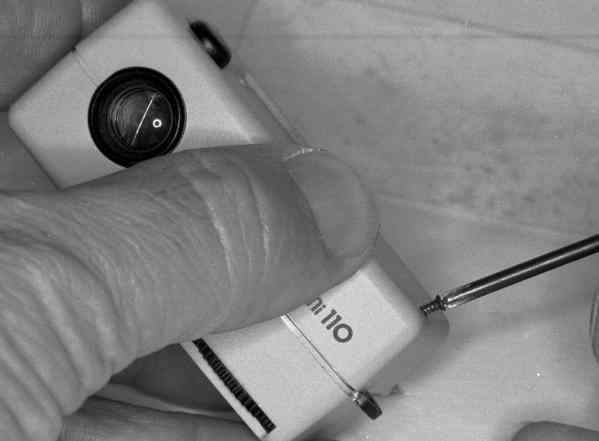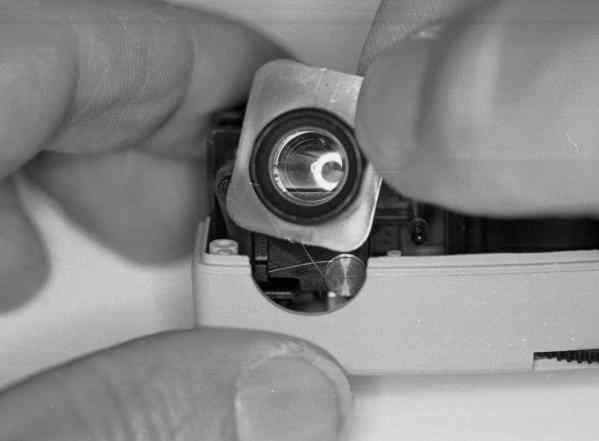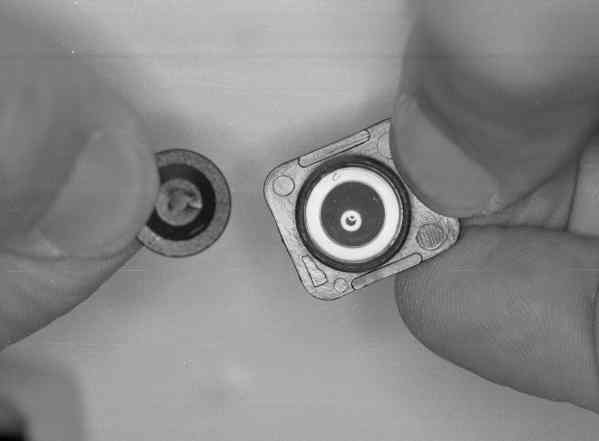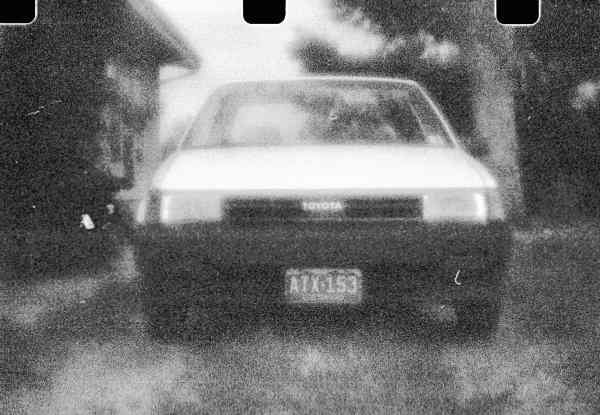
THE CREATIVE CORNER

One of the problems with most 110 cameras is their lack of "speed". By "speed", I mean the ability to take pictures in low light situations. For example, most 110 cameras have slow lenses, like f 11 -- or f5.6, at best. Most do not have slow shutter speeds, and high speed film is not available. So, in available light situations, flash is the only recourse. But if you really like the effect of natural light and want an alternative to artificial light here is something you can try. Many 110 cameras have a waterhouse stop aperture behind the lens which sets the f-stop at a predetermined settings, such as f11. By removing this aperture, the amount of light entering the lens is increased dramatically. I was able to change an f11 lens into an f2.8 lens!
First, you have to take your 110 camera apart. For many 110 cameras, this amounts to just a couple of screws. But even in this case, remove things slowly and watch for parts that fall out from hidden nooks and crannies.

Next, figure out how to gain access to the lens area. Chances are the lens is on a plate that slides out or is screwed or glued in place.

Then look behind the lens. Chances are there is a plate -- with a hole in the middle -- attached to the back of the lens. Simply remove this plate. If there is no plate, you are out of luck -- with THAT camera. So try another!

You can estimate the size of the new f-stop very easily. Most 110 cameras have a 22mm lens. Divide this by the diameter of the lens with the stop plate removed. For example, with the camera in the picture the new diameter is 8mm. So, 22 / 8 == f2.8. Now you can put everything back together.
There are a couple of drawbacks to this approach. First it is pretty permanent. It means you won't be able to use the camera under "normal" conditions anymore. Second, the depth-of-field decreases dramatically since the f-stop is decreased dramatically. You'll find that the point of focus is about 10 feet from the camera. Try to get your subjects as near to this point as possible. Everything from about 5 feet to about 15 feet will be acceptably sharp, but outside of this zone, things will be progressively soft. Lastly, the edges of the image are likely to get pretty fuzzy. These lenses are very simple lens and not corrected for aberrations toward the edge of the image. Your pictures will look like they were taken with a "Hit"-type camera. But you might like the effect.


To return to the main index for the Sub Club click here.
COPYRIGHT @ 1995, 1996, 1997, 1998, 1999, 2000, 2001, 2002, 2003, 2004, 2005 by Joe McGloin. All Rights Reserved.